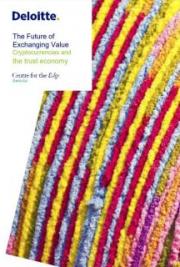-------
5.1.3.8 Summary
Traditional accounting or financial accounting can no longer serve
the purposes of all concerned. Especially the internal organs of the business
concerns, namely managements, want a lot of analytical information
which could not be provided by the financial accounting. Hence to serve
the needs of management two more kinds of accounts – management
accounting and cost accounting have evolved. Simply stated, management
accounting serves the needs of management and cost accounting tries to
determine the costs through a formal system of accounting. Costs can be
classified on various bases and cost sheet is a statement presenting the
items entering into cost of products or services.
5.1.3.9 Key Words
Direct Expenses: expenses that can easily be identified with a particular
product.
Indirect Expenses: expenses which cannot be easily identified with a
particular product.
Overheads: total of all indirect expenses.
Works Cost: prime cost + factory overheads.
Cost Of Production: works cost + administration overheads.
Cost Of Sales: cost of production + selling and distribution overheads.
Cost Sheet: a statement which is prepared to ascertain the cost of sales.
Tenders: a statement which quotes the price for a particular job or level of
production activity.
5.3.10 Self Assessment Questions
1.What are the limitations of financial accounting?
2.Justify the need for cost accounting.
3.Explain the various bases for classification of costs.
4.What are the differences between àcost sheet’ and `tender’.
5.Prepare a cost sheet for the production of 100 units of an article
using imaginary figures.
6.Prepare a statement of cost showing:
261
(a) value of materials consumed
(b) total cost of production
(c) cost of goods sold and
(d) the amount of profit
From the following details relating to a toy manufacturing concern:
Rupees
Opening stock: raw materials
25,000
finished
goods
20,000
Raw materials purchased
2,50,000
Wages paid to labourers
1,00,000
Closing stock: raw materials
20,000
finished goods
25,000
Chargeable expenses
10,000
Rent, rates and taxes (factory)
25,000
Motive power
10,000
Factory heating and lighting
10,000
Factory insurance
5,000
Experimental expenses
2,500
Waste materials in factory
1,000
Office
salaries
20,000
Printing and stationery
1,000
Salesmen’s
salary
10,000
Commission to travelling agents
5,000
Sales
5,00,000
7.Kolam products ltd., produces a stabilizer that sells for rs.300. An
increase of 15% in the cost of materials and 10% in the cost of labour is
anticipated. If the only figures available are those given below, what must
be the selling price to give the same percentage of gross profit as before?
Ֆ Material costs have been 45% of cost of sales
Ֆ Labour costs have been 40% of cost of sales
Ֆ Overhead costs have been 15% of the sales
Ֆ The anticipated increased costs in relation to the present sale
Ֆ Price would cause a 35% decrease in the amount of present gross
Profit.
262
5.1.3.11 Key To Self Assessment Questions (For Problems
Only)
6. Materials used rs.2,55,000; prime cost rs.3,65,000; works cost
Rs.4,18,500; cost of production rs.4,39,500; cost of sales rs.4,49,500 and
profit rs,50,500.
7. Selling price: rs.332.25.
5.1.3.12 Case Analysis
A small scale manufacturer produces an article at the operated
capacity of 10,000 units while the normal capacity of his plant is 14,000
units. Working at a profit margin of 20% on sales realisation, he has
formulated his budget as under:
10,000
units
14,000
units
Rs.
Rs.
Sales realisation
2,00,000
2,80,000
Variable overheads
50,000
70,000
Semi-variable overheads
20,000
22,000
Fixed overheads
40,000 40,000
He gets an order for a quantity equivalent to 20% of the operated
Capacity and even on this additional production profit margin is desired
At the same percentage on sales realisation as for production to operated
Capacity. As you are a cost manager, he approached you to advise him as
To what should be the minimum price to realise this objective.
Solution:
Computation of prime cost
Profit margin is 20% on sale
Therefore cost of sale, 80% of rs.2,00,000 i.e. 1,60,000
Variable overheads 50,000
Semi-variable overheads 20,000
Fixed overhead 40,000 1,10,000
Prime cost 50,000
Since an additional production of 4000 units requires an increase
of rs.2000 in semi-variable expenses, an additional production of 2000
units will require an increase of rs.1000 in semi-variable expenses:
263
Differential cost of production of 2000 extra units
10000
12000 Differential Cost
Units
Units
For 2000 Units
Rs.
Rs.
Rs.
---------------------------------------------------------------------------------
Prime cost
50,000
60,000
10,000
Variable overheads
50,000
60,000
10,000
Semi-variable overheads
20,000
21,000
1,000
Fixed overheads
40,000
40,000
---
-------------------------------------------------
1,60,000
1,81,000
21,000
-------------------------------------------------
The different cost for 1 unit is rs.21000 ÷ 2000 units i.e. Rs.10-50. Profit
margin required is 20% on sale or 25% on cost. Hence the minimum selling
price = rs.10.50 + rs.2.625 = rs.13.125.
----
264
Lesson 5.2
Standard Costing And Variance Analysis
5.2.1 Introduction
During the evolutionary stage of costing, the focus was only on the
determination of actual cost i.e. The main activity of the cost accountants
was determining the actual cost of production. This resulted in the non-
availability of cost control measures to the management. Standard costing
was developed by cost accountants to meet these contingencies.
5.2.2
Know the meaning of standard costing
Understand the advantages of standard costing system
Understand the different kinds of variances with special reference
to material variance and labour variance
Understand the reasons for these variances
Realize the importance of variance analysis
5.2.3 Contents of concepts:
5.2.3.1 Meaning Of Standard Costing
5.2.3.2 Objectives Of Standard Costing
5.2.3.3 Advantages Of Standard Costing
5.2.3.4 Limitations Of Standard Costing
5.2.3.5 Standard Costing And Budgetary Control
5.2.3.6 Variance Analysis
5.2.3.7 Cost Variances
5.2.3.8 Direct Material Cost Variance
5.2.3.9 Direct Labour Cost Variance
5.2.3.10 Summary
5.2.3.11 Keywords
5.2.3.12 Self Assessment Questions
265
5.2.3.13 Key To Self Assessment Questions
5.2.3.1 Meaning Of Standard Costing
Standard costing is a technique which uses standards for costs and
revenues for the purpose of control through variance analysis. Standard
costing involves the setting of predetermined cost estimates in order
to provide a basis for comparison with actual costs. Standard costing
is universally accepted as an effective instrument for cost control in
industries.
A standard cost is a planned cost for a unit of product or service
rendered. According to h.j. wheldon, “standard costs are pre-determined
or forecast estimates of cost to manufacture a single unit or a number of
units of product during a specific immediate future period”. Standard cost
is defined in the cima official terminology as: “a predetermined calculation
of how much costs should be under specified working conditions. It is
built up from an assessment of the value of cost elements and correlates
technical specifications and the qualification of materials, labour and other
costs to the prices and/or usage rates expected to apply during the period
in which the standard cost is intended to be used. Its main purpose is to
provide basis for control through variance accounting for the valuation of
stock and work-in-progress and in some cases, for fixing selling prices”.
5.2.3.2 Objectives Of Standard Costing
Ֆ The objectives of standard costing technique are as follows:
Ֆ To provide a formal basis for assessing performance and efficiency.
Ֆ To control costs by establishing standards and analyzing of
variances.
Ֆ To enable the principle of ‘management by exception’ to be
practiced at the detailed operational level.
Ֆ To assist in setting budgets
To achieve the above objectives the following steps are adopted in standard
costing:
Ֆ Determining the standard for direct material, direct labour and
266
different overheads
Ֆ Ascertaining the actual cost of production
Ֆ Ascertaining the variances by comparing actual costs with
standard costs
Ֆ Analyse the variances to know the reason for variances.
Ֆ Adopting corrective measures to control the variances in futures.
5.2.3.3 Advantages Of Standard Costing
A good standard costing system results in the following advantages:
Ֆ The setting of standards should result in the best resources and
methods being used and thereby increase efficiency.
Ֆ Budgets are compiled from standards.
Ֆ Actual costs can be compared with standard costs in order to
evaluate performance
Ֆ Areas of strengths and weakness are highlighted
Ֆ It acts as a form of feed forward control that allows an organization
to plan the manufacturing inputs required for different levels of
output.
Ֆ It acts as a form of feedback control by highlighting performance
that did not achieve the standard set.
Ֆ It operates via the management by exception principle where only
those variances (i.e. Differences between actual and expected
results) which are outside certain tolerance limits are investigated,
thereby saving managerial time and maximizing managerial
efficiency.
Ֆ The process of setting, revising and monitoring standards
encourages reappraised of methods, materials and techniques
thus leading to cost control as an immediate effect and to cost
reduction as a long term effect.
5.2.3.4 Limitations Of Standard Costing
Standard costing suffers from the following limitations:
Ֆ A lot of input data is required which can be expensive
Ֆ Unless standards are accurately set any performance evaluation
will be meaningless.
Ֆ Uncertainty in standard costing can be caused by inflation,
267
technological change, economic and political factors, etc.
Standards therefore need to be continually updated and revised.
Ֆ The maintenance of the cost data base is expensive.
Ֆ Setting of standards involves forecasting and subjective judgments
with inherent possibilities of error and ambiguity.
Ֆ Standard costing cannot be adopted in the firms which do not
have uniform and standard production programme.
Ֆ It is very difficult to predict controllable and uncontrollable
variances.
5.2.3.5 Standard Costing Vs. Budgetary Control
Standard costing and budgetary control are control techniques
adopted in a firm with specific objectives. Following points of differences
between the two can be observed:
1. Standard costing is a long range control activity developed and
adopted with focus on production. Budgetary control is an activity
concerned with every functional area of the firms and functional
budgets are prepared to control that function in a shorter term.
2. Standard costs are scientifically predetermined. Budgetary
control is concerned with the overall profitability and financial
position of the concern.
3. Standard costing is concerned with ascertainment and control of
costs. Budgetary control is concerned with the overall profitability
and financial position of the concern.
4. The emphasis of standard costing is on what should be the cost
whereas in budgetary control the emphasis is on the level of costs
not to be exceeded.
5. Standards are determined for each element of cost. Budgets are
determined for a specified period.
6. Standard cost is a projection of cost accounts. Budget is a
production of financial accounts.
7. Standard costing is concerned with the control of costs and is
more intensive in scope. Budgetary control is concerned with the
operation of business as a whole and is more extensive.
268
5.2.3.6 Variance Analysis
The difference between the standard cost and the actual cost is
known as ‘cost variance’. If actual cost is less than the standard cost, the
variance is favorable. If the actual cost is more than the standard cost, the
variance is unfavorable. A favorable variance indicates efficiency, while an
unfavorable one denotes inefficiency. However, mere knowledge of these
variances would not be useful for ensuring cost control. These have to be
thoroughly analyzed so as to find out the contributory factors. It would
then be possible to find out whether the variances are amenable to control
or not. The term ‘variance analysis’, thus, may be defined as ‘the resolution
into constituent parts and the explanation of variances’.
Variances are of two types: cost variances and sales variances. In
this lesson cost variances relating to material and labour are explained.
5.2.3.7 Cost Variances
As noted previously, the difference between the standard cost and
the actual cost is known as ‘cost variance’. The total cost variance should
be split into its constituent parts, in order to analyze the cost variances in
greater detail. The following figure reveals the picture clearly:
Total cost variance
Direct Material Direct Labour Overhead
Cost Variance Cost Variance
Cost Variance
(DMCV) (DLCV) (OCV)
Price
Usage Rate Efficiency Variable Fixed
Variance Variance Variance Variance Overhead Overhead
(DMPV)
(DMUV) (DLRV) (DLEV)
269
Cost Cost
Variance Variance
(VOVC) (FOCV)
Expenditure Volume
Variance
Variance
(FOEXPV)
(FOVV)
5.2.3.8 Direct Material Cost Variance
It is the difference between the standard cost of material specified
for the output achieved and the actual cost of materials used. The standard
cost materials is computed by multiplying the standard price with the
standard quantity for actual output and the actual cost is obtained by
multiplying the actual price with actual quantity. The formula is:
= Standard Cost For Actual Output – Actual Cost
or
DMCV = (Standard Price × Standard Quantity For Actual Output)
– (Actual Price × Actual Quantity)
= (SP × SQ) – (AP × AQ).
Example 1.
The standard cost of material for manufacturing a unit of a
particular product is estimated as under :
16 kg of raw materials @ rs. 1 per kg. On completion of the unit it
was found that 20 kg. Of raw material costing rs. 1.50 per kg. Have been
consumed. Compute material cost variance:
DMCV= (SP × SQ) – (AP × AQ)
= (16 × 1) – (20 × 1.50)
= Rs. 14 (Adverse)
270
Direct Material Price Variance (DMPV)
It is that portion of material cost variance which is due to the
difference between the standard prices specified and the actual price
paid. This variance may be due to a number of reasons: change in price,
inefficient buying, standard quality of materials not purchased, favorable
discounts not obtained etc. The formula is:
Dmpv = actual quantity (standard price – actual price)
If the actual price is more than the standard price, the variance
would be adverse and in case the standard price is more than the actual
price, it would result in a favourable variance.
Example 2.
Use the information given in example 1 and compute the material
price variance.
DMPV = AQ (SP – AP)
= 20 (1 – 1.50)
= Rs. (10) Adverse.
Direct Material Usage Or Quantity Variance (DMUV)
It is the difference between the standard quantity specified and the
actual quantity used. This variance may arise because of: careless handling
of materials, wastage, spoilage, theft, pilferage, changes in product design,
use of inferior materials, defective tools and equipment etc. The formula
is:
DMUV = Standard Price (Standard Quantity For Actual Output – Actual
Quantity)
= SP (SQ – AQ).
271
Example 3.
Use the information given in example 1 and compute the material
usage variance.
DMUV = SP (SQ – AQ)
= 1 (16 – 20)
= Rs. 4 (Adverse)
Note. The total of material price and usage variances is equal to
material cost variance. Thus,
DMCV = DMPV + DMUV
in the example that has been used so far, let us verify this:
DMCV = DMPV + DMUV
Rs. 14 (A) = Rs. 10 (A) + Rs. 4 (A)
Illustration 1.
A manufacturing concern which had adopted standard costing
furnishes the following information.
Standard :







